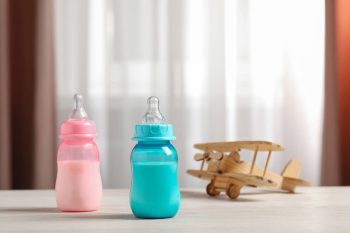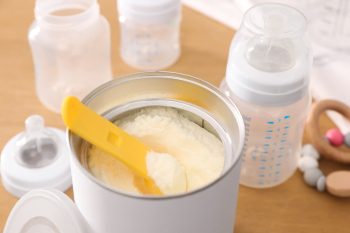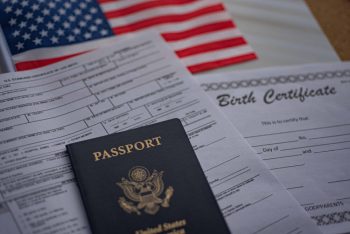Traveling with a baby can be both an exciting and daunting experience, especially for parents who need to bring baby essentials like formula on a plane: but, how to bring formula on plane?
Navigating through airport security regulations and ensuring your baby’s nutrition needs are met during the journey requires careful planning.
In this guide, we’ll provide you with valuable insights and practical tips on how to bring baby formula on a plane, ensuring a smooth and stress-free travel experience.
Understanding Air Travel Regulations
Before you embark on your journey, it’s crucial to familiarize yourself with the air travel regulations that pertain to carrying baby formula.
The Transportation Security Administration (TSA) has specific guidelines to ensure the safety of both passengers and their belongings.
1. Liquids Rule: The TSA allows parents to carry a reasonable amount of baby formula, breast milk, or juice for infants and toddlers in their carry-on bags. These liquids are exempt from the standard 3.4-ounce (100 milliliters) liquid limit.

2. Separate Screening: To expedite the security screening process, inform the security officers that you are carrying baby formula. They may need to conduct additional screening procedures, but being transparent will help minimize any delays.
3. Preparedness: Pack the baby formula in a way that it’s easily accessible for inspection. Consider using clear, sealable bags to organize your baby essentials, which will also help you stay organized during your trip.
Packing Baby Formula: Step by Step
1. Choose the Right Formula: Opt for ready-to-feed liquid formula or single-serving powder packets. These options are not only convenient but also reduce the need for measuring and mixing on the plane.
2. Pack Sufficient Quantity: Estimate the amount of formula your baby will need during the flight, and then pack a little extra to account for potential delays. It’s always better to have more than to run out.
3. Proper Packaging: Store the baby formula in its original container with the label intact. This helps verify the contents during security checks. If you opt for powdered formula, consider using single-serving packets or portioning it into clearly labeled containers.

4. Insulated Container: To maintain the temperature of prepared formula, invest in an insulated container or thermos. This is especially important for long flights.
Tips for a Hassle-Free Airport Experience
1.Arrive Early: Give yourself ample time to get through security, especially with the extra items you’ll be carrying. Arriving early helps reduce stress and ensures you have enough time for any unexpected delays.
2. Documentation: Carry a copy of your baby’s birth certificate or passport to verify their age if requested by security.

3. Communication: Politely communicate with security personnel and let them know you have baby formula. Cooperation and transparency can help expedite the screening process.
4. Consider Pre-Boarding: Many airlines offer pre-boarding for families with young children. Take advantage of this to get settled and organize your belongings before other passengers board.
During the Flight: Feeding and Storage
1. In-Flight Feeding: When it’s time to feed your baby, alert the cabin crew. They can provide you with hot water to mix with powdered formula or warm up pre-prepared bottles.
2. Storage: If you have leftover prepared formula, store it in the insulated container you brought. Airlines often have refrigeration facilities if you need to keep the formula cold.
Final Thoughts
Traveling with baby formula on a plane doesn’t have to be a stressful experience. By understanding the regulations, packing strategically, and communicating effectively, you can ensure your baby’s nutritional needs are met while you’re on the go.
Remember, preparation is key, and a well-organized approach will help you enjoy a smooth and enjoyable journey with your little one.
In conclusion, whether you’re a first-time parent or a seasoned traveler, following these guidelines will help you navigate the intricacies of bringing baby formula on a plane.
Your baby’s comfort and well-being are of utmost importance, and with the right planning, you can create lasting memories of a successful and memorable travel adventure.
(Note: This blog article is provided for informational purposes only. Regulations and guidelines may vary, so it’s essential to check with the relevant authorities and airlines before your travel date.)


